TechRadar's Hottest at CES 2021 Awards
The best tech from CES 2021... that we saw from a safe distance
The first-ever virtual CES wasn’t without its trials and tribulations, but we have to say we’re impressed with how the industry handled an event the size and scale of CES 2021 without renting out a convention center. It wasn’t perfect, but it was, if anything, pretty memorable.
While the lack of an in-person experience stopped our editors from getting as much hands-on time as they usually would with new products, it didn’t stop us from meeting with the biggest names in tech like Samsung, LG, Sony and more to hear what they had to say about their latest and greatest gadgets.
From drones and robot vacuums, to new mobile processors, laptops and TVs, the first virtual CES provided us plenty of new tech to keep our eyes on over the coming year.
Which gadgets and gizmos won the hearts of our editors this week? Here’s our editors’ picks of the hottest tech of CES 2021.
(Editor’s note: the picks below are listed in alphabetical order, not by how impressed our editors are with them. It’s also worth noting that some products are still in their conceptual prototype phase, so some specs or features may change before release.)
AMD Ryzen 5000 Mobile Processor
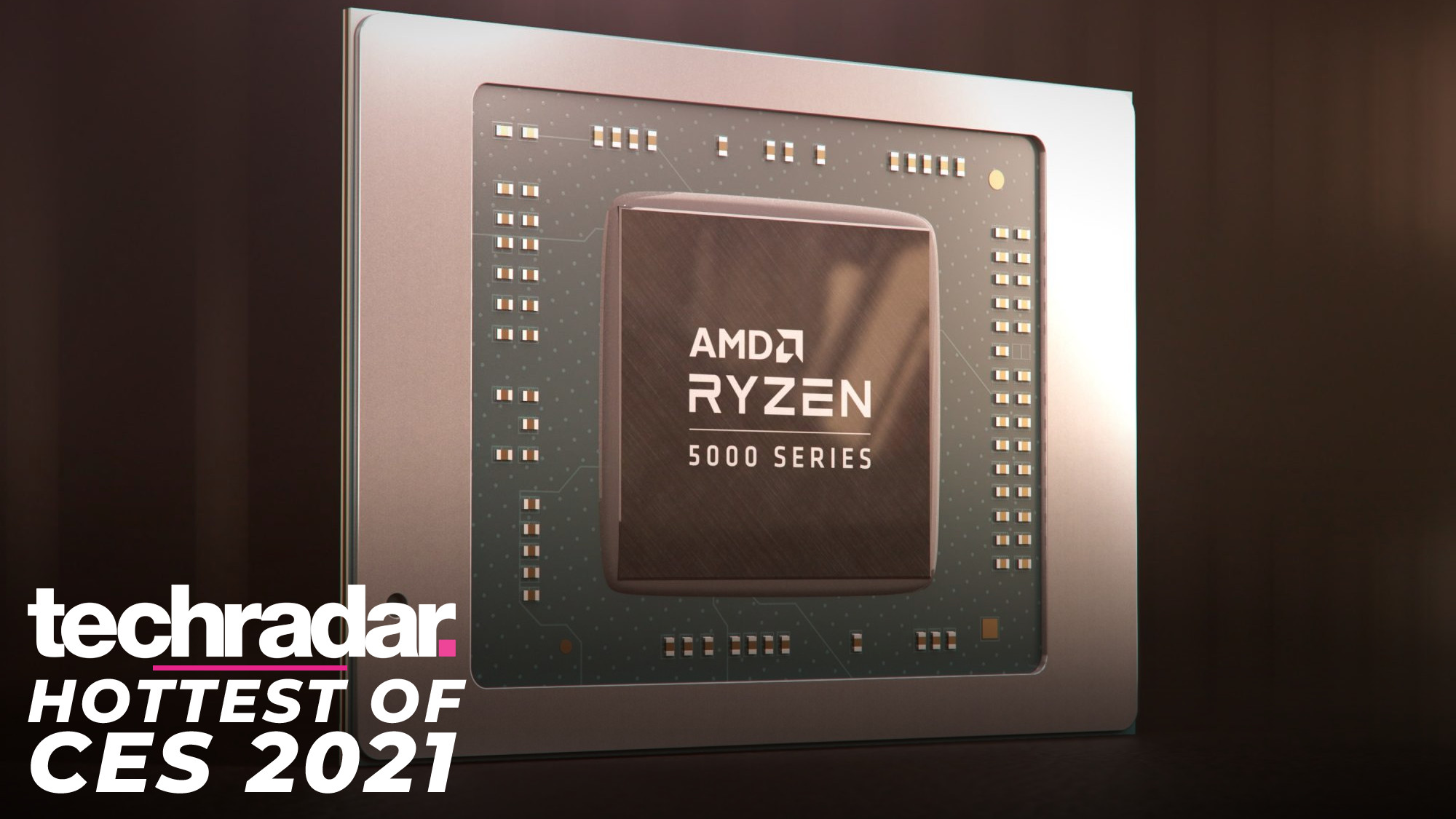
AMD’s CEO, Dr Lisa Su, delivered a triumphant keynote at CES 2021, where she showed off the much-anticipated AMD Ryzen 5000 series of mobile processors.
The new processors are based on the same Zen 3 architecture as the desktop Ryzen 5000 CPUs that launched at the end of 2020 (to much critical and commercial acclaim), and look like they could seriously trouble Intel, threatening its current market-leading position in laptops.
Get daily insight, inspiration and deals in your inbox
Sign up for breaking news, reviews, opinion, top tech deals, and more.
When it comes to battery life, AMD claims the Ryzen 7 5800U can last up to 17.5 hours in general usage, and up to 21 hours when playing back movies. We’ll need to verify these claims ourselves, but if they're even remotely accurate these new processors could be a real game-changer for laptops.
If you want more performance, and battery life isn’t so important, then the AMD HX processors could be for you. These are unlocked for overclocking with some OEM systems, and with a TDP of 45W+ they're designed to really push the boundaries of what a gaming laptop is capable of.
To say that we’re excited about them is an understatement.
Read more: AMD Ryzen 5000 release date, price, benchmarks and specs
Lenovo LaVie Mini
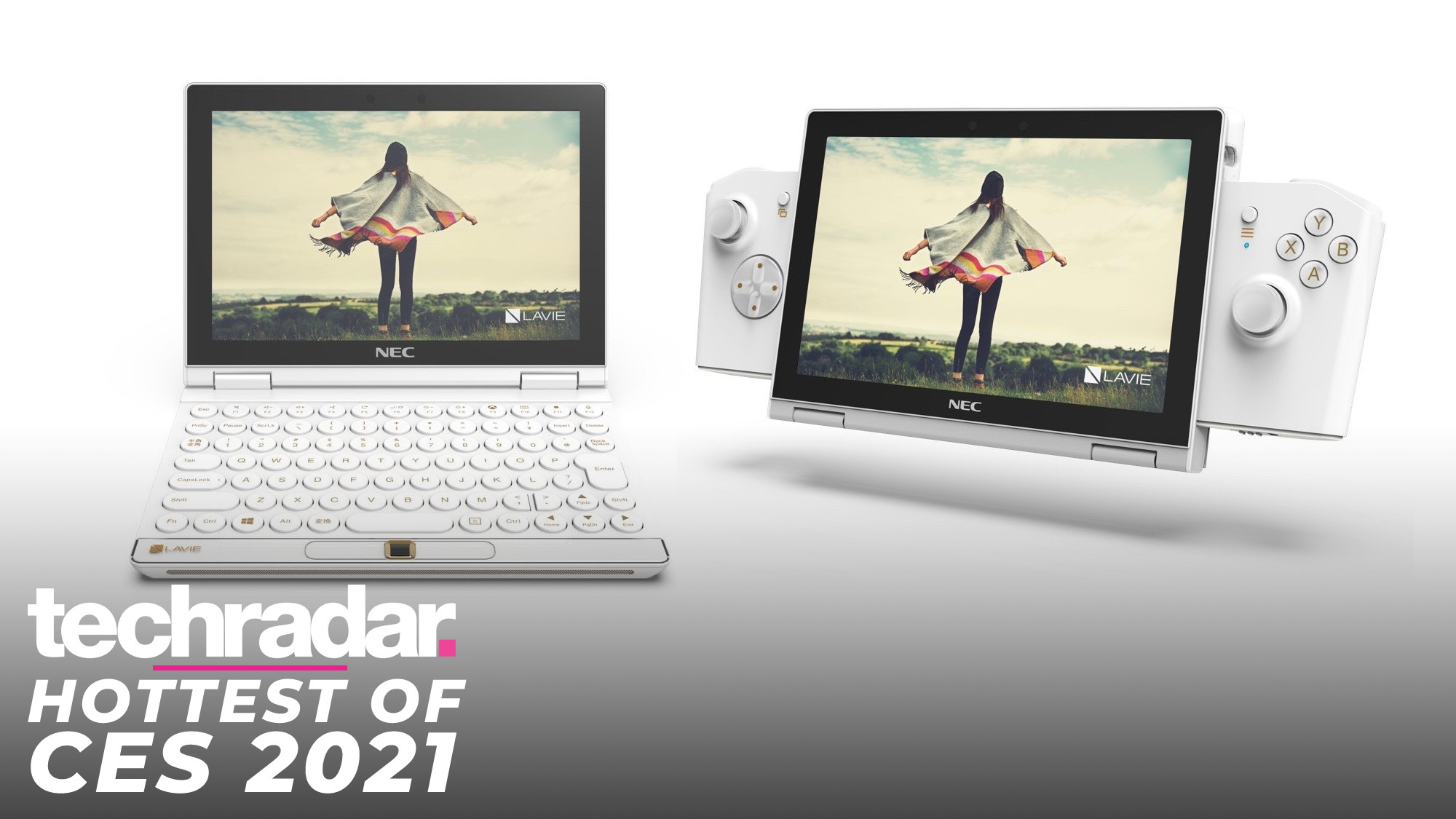
The Lenovo LaVie Mini is what happens when a netbook meets a Nintendo Switch - it’s a hybrid low-power laptop that can transform into a gaming handheld. It’d be the perfect solution for emulators and game streaming services on the go (paging Google Stadia) and yet remain versatile enough for browsing the web and streaming music in between gaming sessions.
In terms of specs, you’re looking at an 8-inch, 1900x1200 touchscreen backed up with a Tiger Lake Intel Core i7 processor with Iris Xe graphics, 16GB of RAM, a 256GB m.2 SSD and an optical touch sensor instead of a trackpad. It uses a tiny keyboard and can, perhaps best of all, plug into a dock for 4K60 output to your monitor or big screen TV.
The bad news? This one’s still just a concept at this point. It’s not something Lenovo - and its sub-brand NEC that came up with the concept - have any plans to manufacture at this point. That could very well change after Lenovo sees how much interest there is around it, but we wouldn’t toss out your Nintendo Switch just yet.
The other bad news? Lenovo has already said that both the Gaming Controller and the HDMI-connected Dock are deemed as "optional" accessories, which means you'd need to shell out extra cash for the accessories that would make the LaVie Mini a compelling product. Bummer.
Read more: Lenovo has an answer to the Nintendo Switch and Dell Concept UFO
LG Rollable
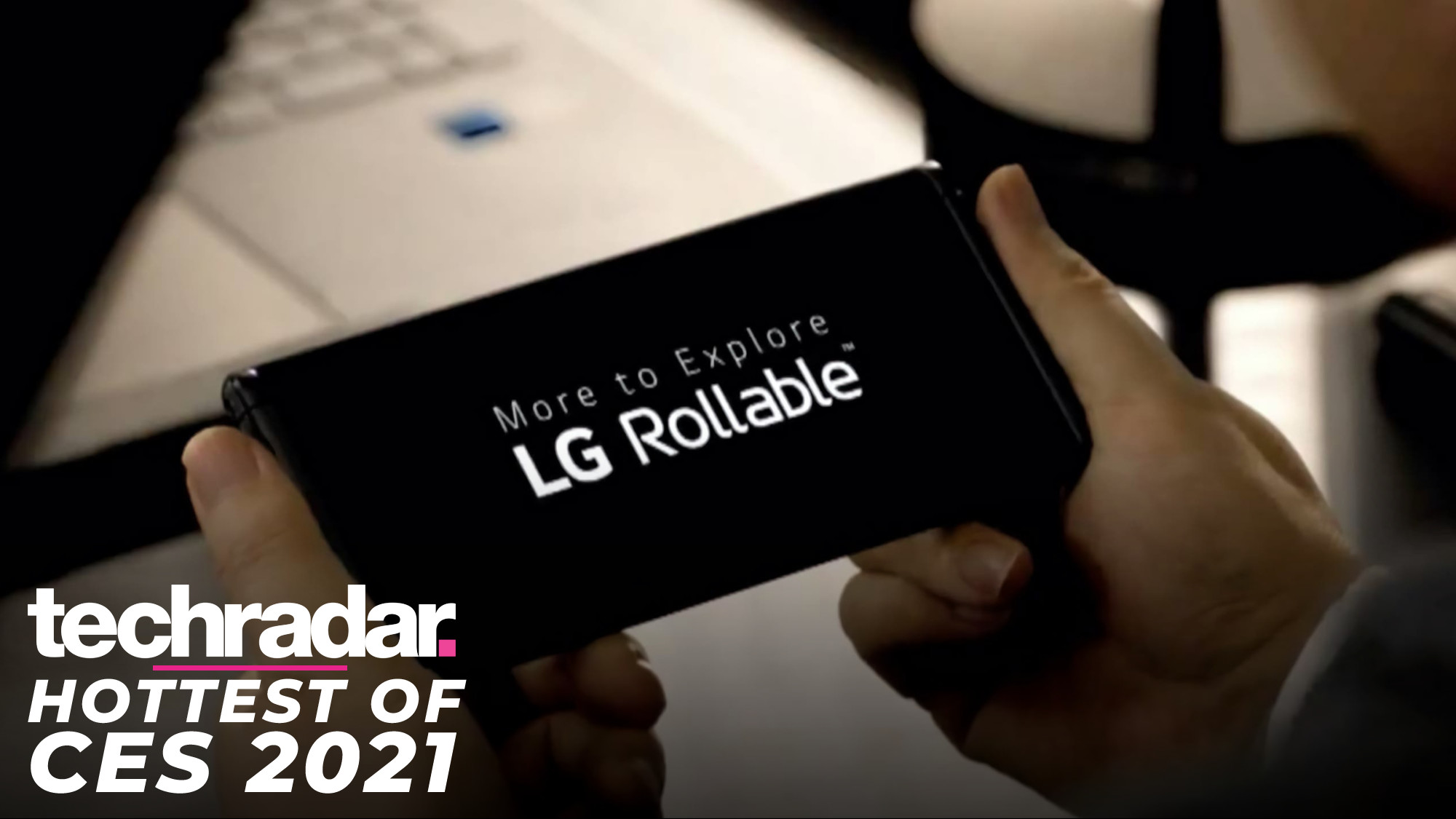
We’ve been hearing rumors of the LG Rollable for a while now, but at CES 2021, LG officially confirmed the name of the phone, while also providing a brief glimpse of it in a teaser.
From the teaser you can see something that starts out looking much like a conventional smartphone, but with edges that extend to create a small tablet. This makes it very different in design to a foldable phone then, but the end result is somewhat similar, giving you the option of either a large screen or a smaller one at any given time.
We don’t know anything else about the LG Rollable yet, including when you’ll be able to buy it, but sources familiar with LG's plans told CNET that the LG Rollable will be coming in 2021, and an LG spokesperson just confirmed to Nikkei that it will be "launched this year."
Hopefully you’ve been saving though, because a recent leak suggested that the LG Rollable might cost as much as $2,359 (roughly £1,775, AU$3,130).
Read more: LG Rollable finally shown off as a foldable phone alternative at CES 2021
LG Transparent Smart Bed
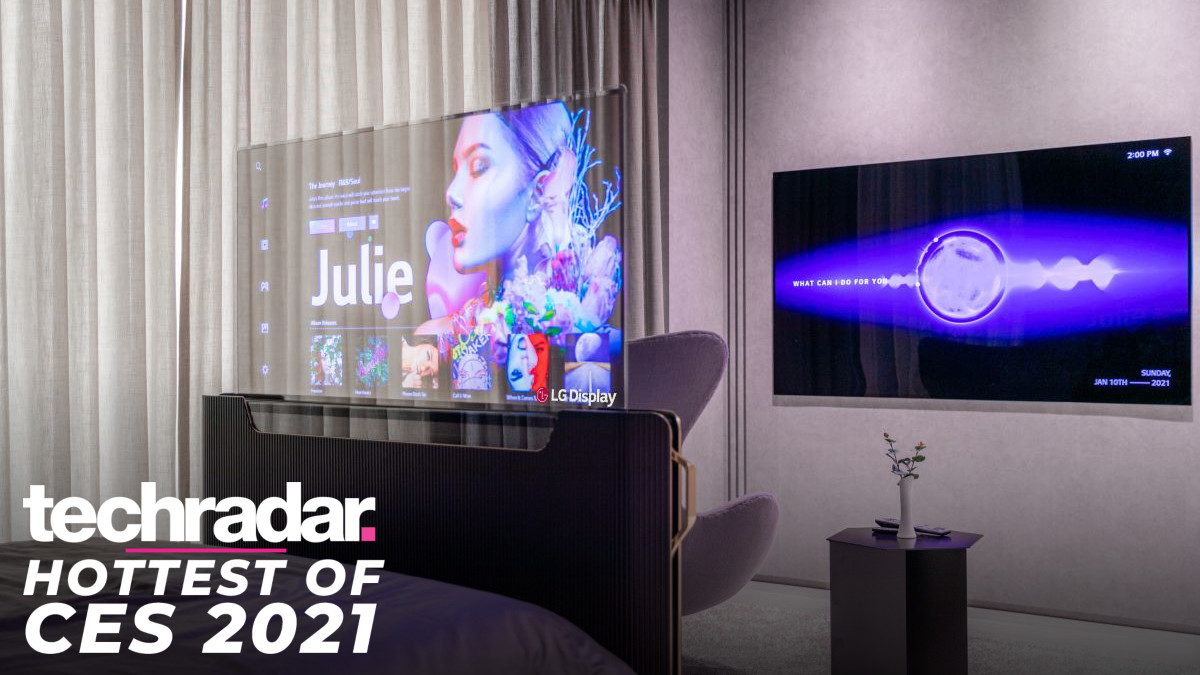
LG is taking the luxury of watching TV in bed to the next level with its 55-inch Transparent OLED Smart Bed concept that smuggles a transparent OLED TV inside the foot of your bed.
The concept combines two of LG’s previous prototypes - the LG Transparent OLED that we saw at CES a year ago and the LG Rollable OLED we saw two years ago - into a single product.
According to LG, the OLED takes about 25 seconds to fully extend from the foot of the bed, but LG says that you can change how much of the TV rolls up at one time, allowing you to change the aspect ratio of the TV on the fly. This, LG says, can be useful if you only need a small window to check the weather or activate LG’s ThinQ IQ assistant, and is faster than unfurling the whole screen.
On top of the transparent OLED, the OLED Smart Bed also houses a speaker system which means you don’t have to worry about hooking up an external soundbar - though we’re hoping LG figures out a way to make it a Dolby Atmos system if this ever gets made into a real product.
For now, however, this one’s just a dream.
Read more: LG TV 2021: every OLED, MiniLED, and NanoCell TV coming this year
Moflin Pet Robot

Created by Vanguard Industries with a successful Kickstarter campaign , Moflin is an AI pet robot with "emotional capabilities", and it looks like a fluffy gray guinea pig, with black beady eyes and soft fur.
Its creators say that their unique algorithm allows Moflin to learn and grow, using built-in sensors to evaluate its surroundings. These sensors include accelerometers with gyroscopes, touch sensors, and microphones. That means it's capable of distinguishing between different people depending on how they interact with it, and can express its 'feelings' accordingly, through movements and unbearably cute sounds that were inspired by real animal noises.
According to the company, each Moflin will develop an individual personality over time, depending on the environment and "how their owners treat them", with possible emotions including anxious, calm, happy, excited, and more – just like a real pet.
Unfortunately, robot pets rarely come cheap. Vanguard Industries says that it aims to successfully deliver its first Moflin in March, and you can get your hands on one by pledging $400 (about £290 / AU$500), with delivery expected by June 2021.
Read more: Meet Moflin, the adorable AI pet robot that will learn to love you
Razer Project Hazel
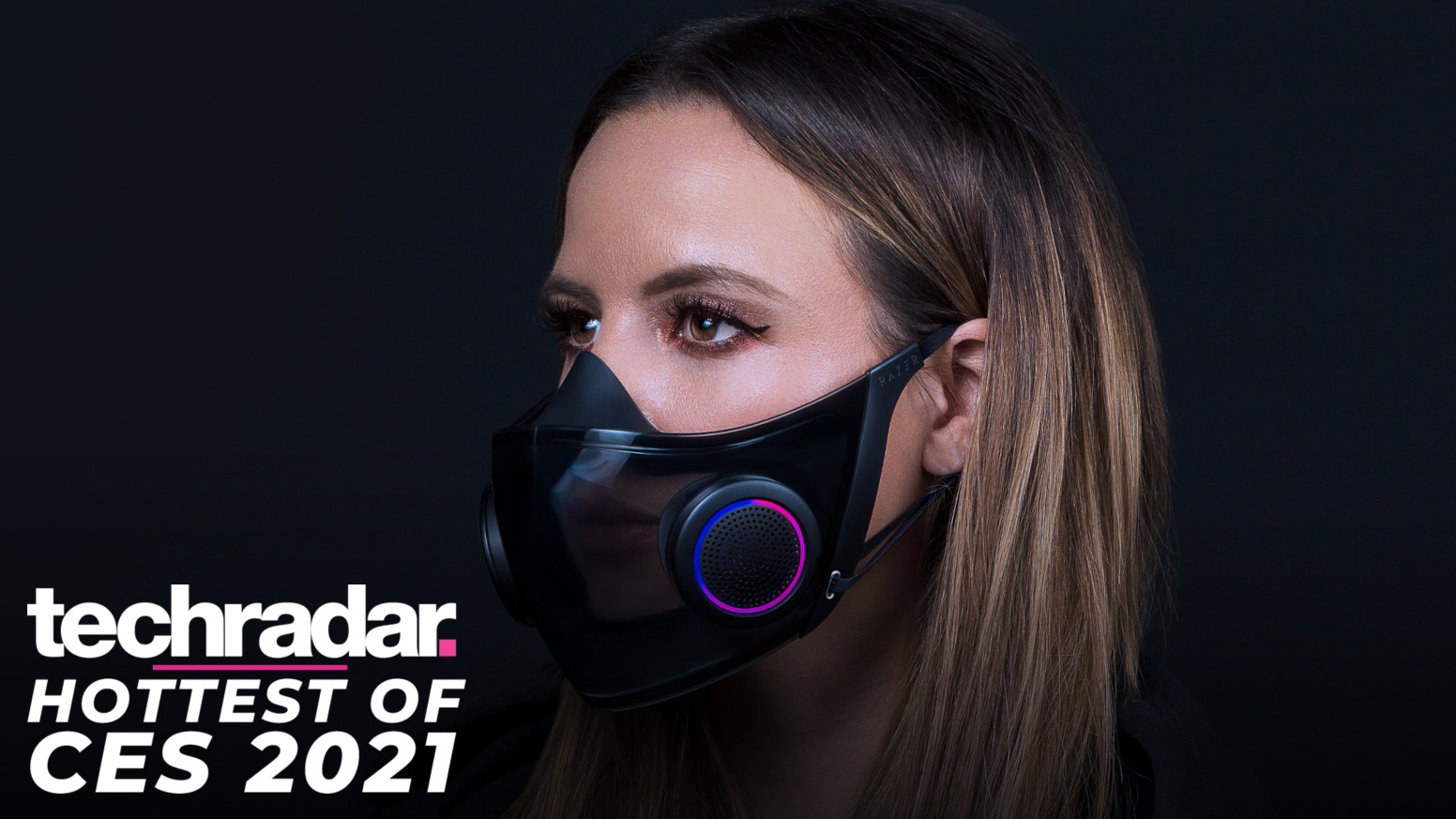
Razer has revealed a seriously smart face mask at CES 2021, and with everything that's going on in the world, it’s the exact combination of technological audacity and safety we need.
While the aesthetics won't be a hit for everyone, before you make any rash judgments on this RGB-injected medical wear, you should know that every part of the design has an important part to play - even the funky lighting.
The RGB lighting on the mask will indicate low power levels or let you know when your filter needs replacing, though you can turn off the lighting if you prefer. The mask is also waterproof, scratchproof, and face-fitting thanks to a silicone liner that forms a seal to prevent rogue airflow.
As a way to help out the hearing impaired, the clear face-panel design was purposely included for better socialization and to help those who require lip reading for assisted communication and Razer is also currently patenting its 'Razer Voiceamp Technology', which prevents the tight seal of the mask from muffling your voice by using a built-in mic and amplifier to give your speech crystal clear clarity.
While there are working prototypes, Razer has made it clear that Project Hazel is a work in progress and will continue to be optimized with the help of community feedback. There isn't currently any mention of when we can expect to see the mask hitting shelves or an estimated retail price, but if feedback on social media is anything to go by, the world is ready for it now.
Read more: Razer's Project Hazel has us genuinely excited to wear a smart face mask
Razer Project Brooklyn
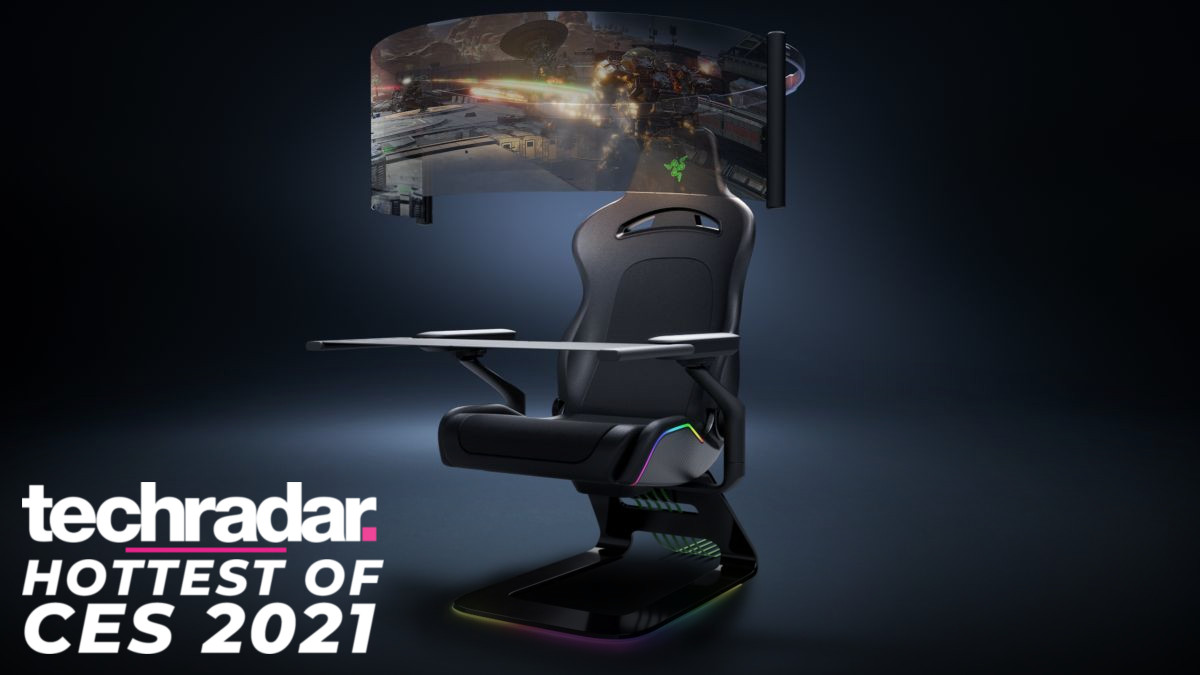
Of course, Hazel isn’t the only project Razer announced at CES 2021: Project Brooklyn is a first-of-its-kind gaming chair that offers haptic feedback, customizable RGB lighting and a 60-inch OLED rollout display mounted to the seatback providing the immersive, panoramic visuals – which is deployable at the push of a button.
If ever there was a reason to turn up at the Las Vegas Convention Center in early January, this chair would be it.
Since it's a concept build, the odds of seeing a Project Brooklyn chair available for sale are slim, but elements of it could be implemented in other products. The company said that it plans on continuing development of the concept and plans on testing it out with top eSports players and influencers to assess the project's feasibility with an eye towards taking that feedback and integrating it into Razer's future gaming chair lineup.
Given the prevalence of the technologies Razer is incorporating into this concept – rollout screens are going to be big this year, for instance – it's almost certain that we will eventually see something like Project Brooklyn sooner rather than later. That's what we keep telling ourselves, anyway.
Read more: Razer's Project Brooklyn gaming cockpit makes us wish CES 2021 was in-person
Samsung JetBot AI 90+ Smart Robot Vacuum
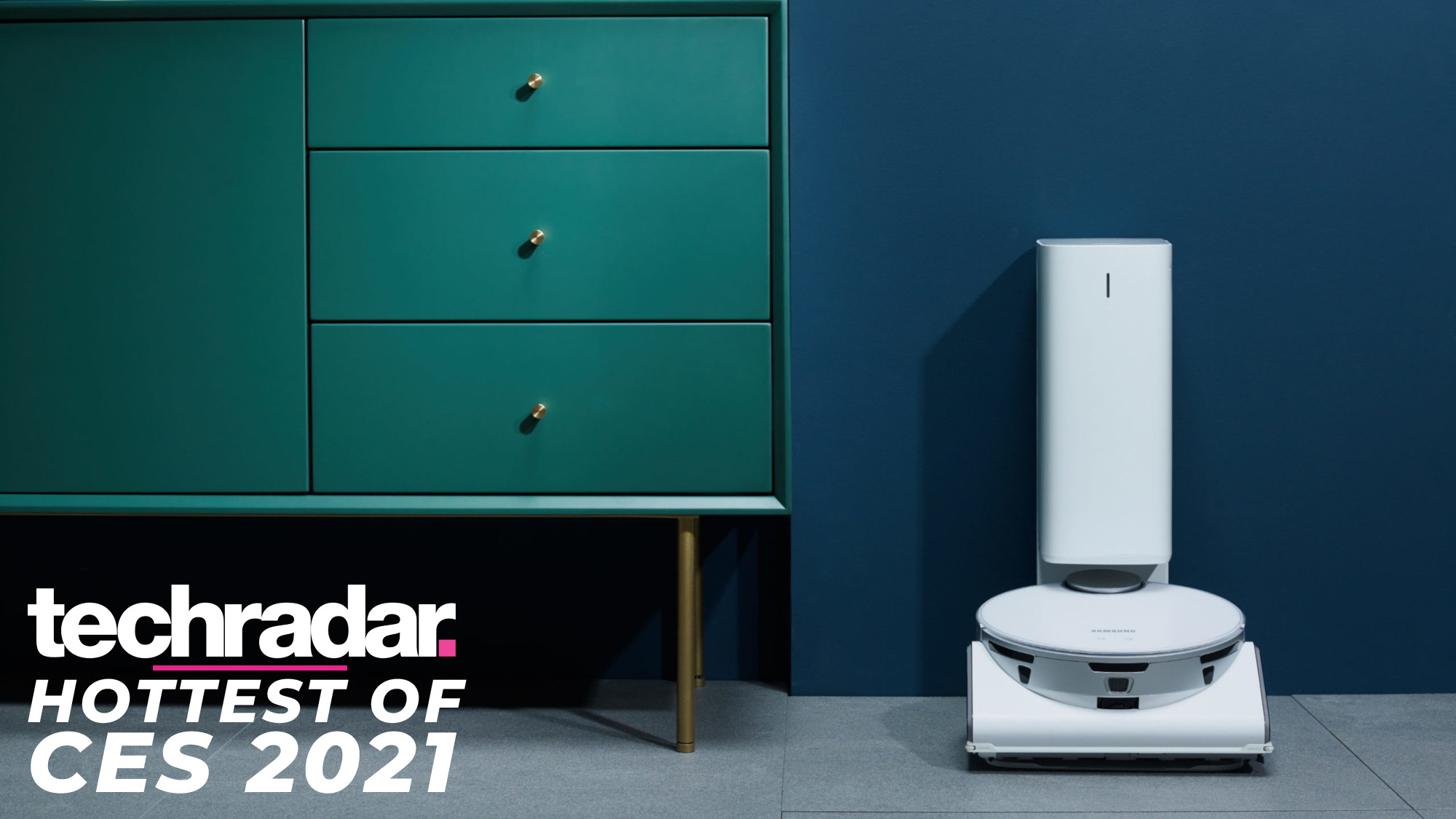
While we saw a number of robot helpers at this year’s CES, there’s only one that hit the right combination of usefulness, intelligence and eventual availability: the Samsung JetBot AI 90+.
Samsung JetBot patrols your home using object recognition technology to decide the best cleaning path. It also uses LiDAR sensors (the lasers used in autonomous vehicles to determine depth and distance) to get up close to objects like toys while avoiding more fragile items like vases – and smellier numbers like pet poop (sorry, “wet messes”). Although we’ve seen smartvacs before, the JetBot 90 AI Plus aims to be the first to never, ever get stuck.
While having LIDAR should, on paper, help the JetBot AI 90+ from getting stuck, we won't believe it until we see it.
Read more: The coolest robots of CES 2021
Samsung HW-Q950A 11.1.4 Dolby Atmos Soundbar
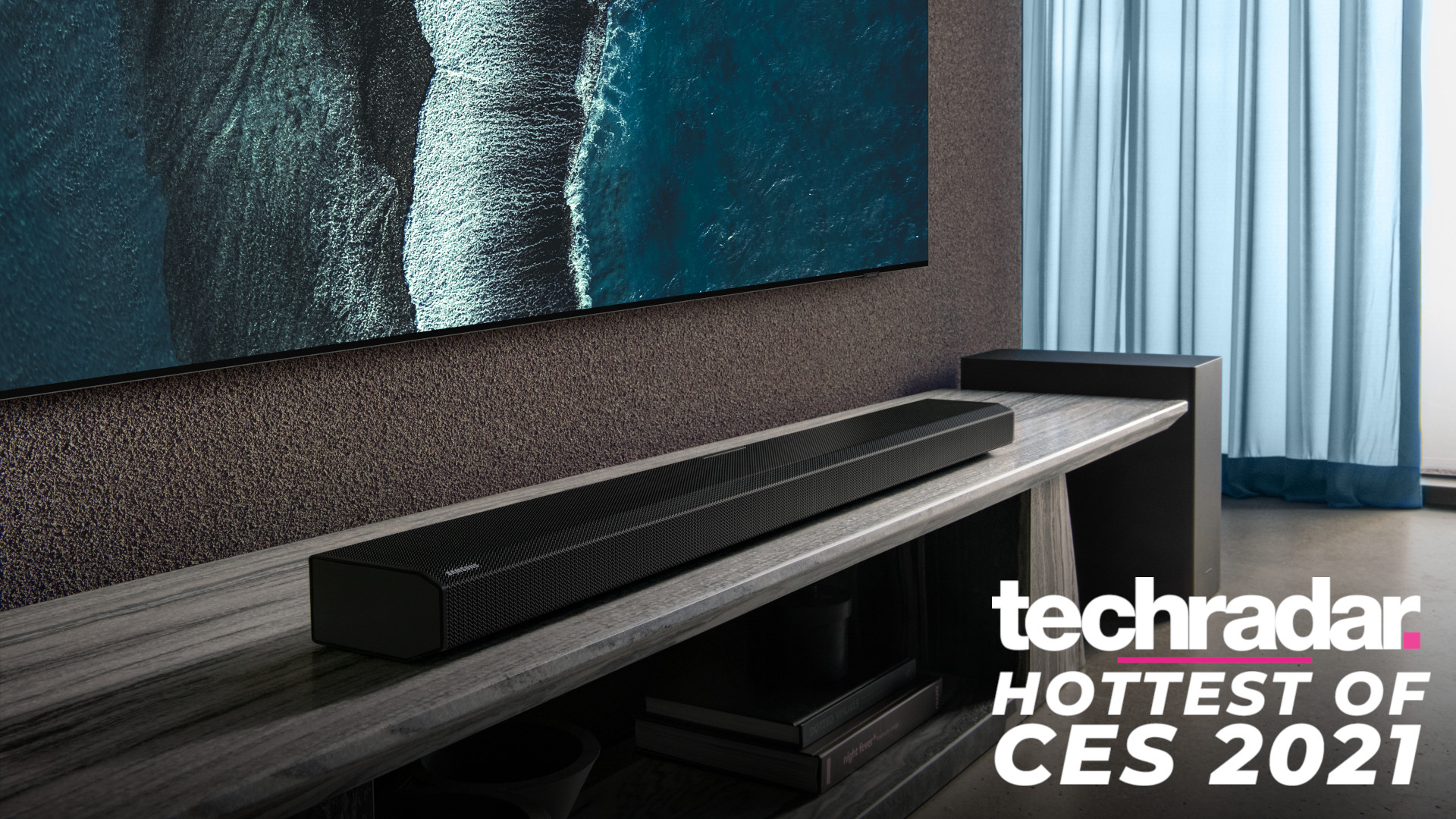
There’s no shortage of soundbars at CES but the Samsung HW-Q950A wins the award for the most impressive, as it can work as an 11.1.4 system when you attach the two wireless rears.
Unlike most soundbar setups, the included wireless rear speakers each have a corresponding side-firing channel, blasting your music or TV audio at you from every angle in conjunction with the bar's upfiring tweeters. The Samsung HW-Q950A also comes with a wireless subwoofer that features a built-in microphone. This mic allows the subwoofer to scan the room and calibrate the sound accordingly, so it should sound great wherever you place it.
For gamers, the new soundbar also comes with a gaming mode to introduce "more dynamics to your game experience", as well as a Active Voice Amplifier feature to boost the dialogue in films and TV shows when it detects noise disturbances.
There's no word yet on how much the Samsung HW-Q950A will cost, but if its predecessor is anything to go by, it'll be pricey. The 9.1.4-channel Samsung HW-Q950T cost $1,399 / £1,499 / AU$1949 when it launched last year, and you can expect the latest model to be at least as expensive.
Read more: Samsung's new Dolby Atmos soundbar could be its most immersive yet
Sony Airpeak Drone
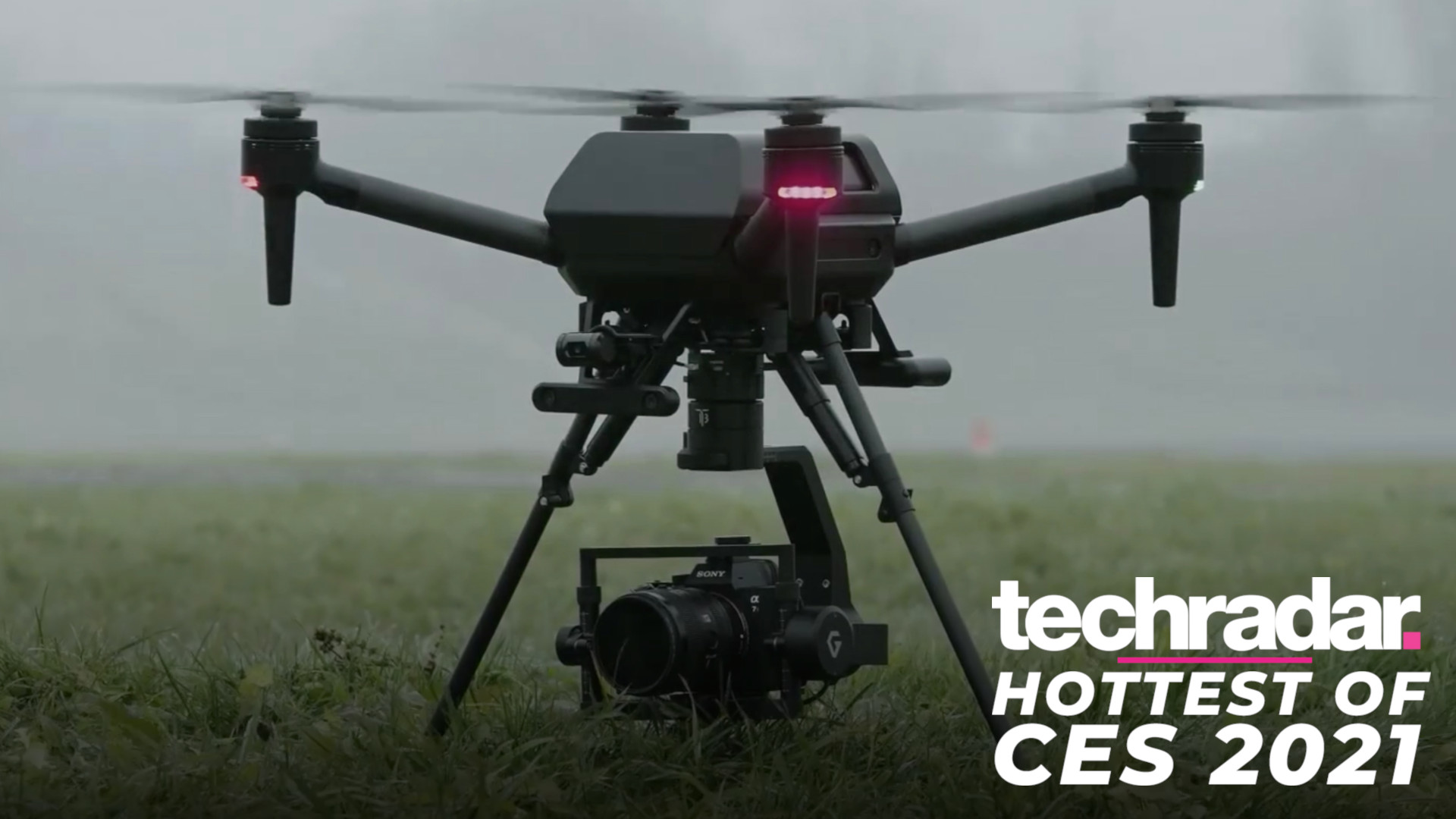
The mysterious Sony Airpeak drone has been shown off for the first time at CES 2021 – and it's not quite the DJI rival we'd been hoping for.
Sony first announced the Airpeak drone project in November 2020, but didn't reveal any images or details about the kind of flying machine it had in store. Well, we've now seen some short videos of Airpeak in action at CES 2021 – and it's fair to say it's aimed at the high-end professional market. In fact, in its short announcement, Sony said that it would be launching a new business targeted at "professional photography and video production" in the first half of 2021.
Starting with a professional drone makes a lot of sense for Sony – that's the market that its biggest land-based cameras, like the Sony A7S III and Sony A7R IV, reside in. Also, not only are the margins in high-end drones much bigger than their hobbyist equivalents, Airpeak fits neatly into Sony's position as a high-end entertainment brand for both professional filmmakers and aspiring creators.
Bluntly speaking, that’s a sneaky way of saying that it’s going to be expensive.
For now, it looks like the likes of DJI and Skydio will continue to reign in the affordable drone space – but Sony Airpeak is certainly shaping up to be a hugely impressive new contender at higher altitudes.
Read more: Sony shows off its Airpeak drone for the first time – and it's no DJI rival
TCL 6-Series QLED 8K TVs
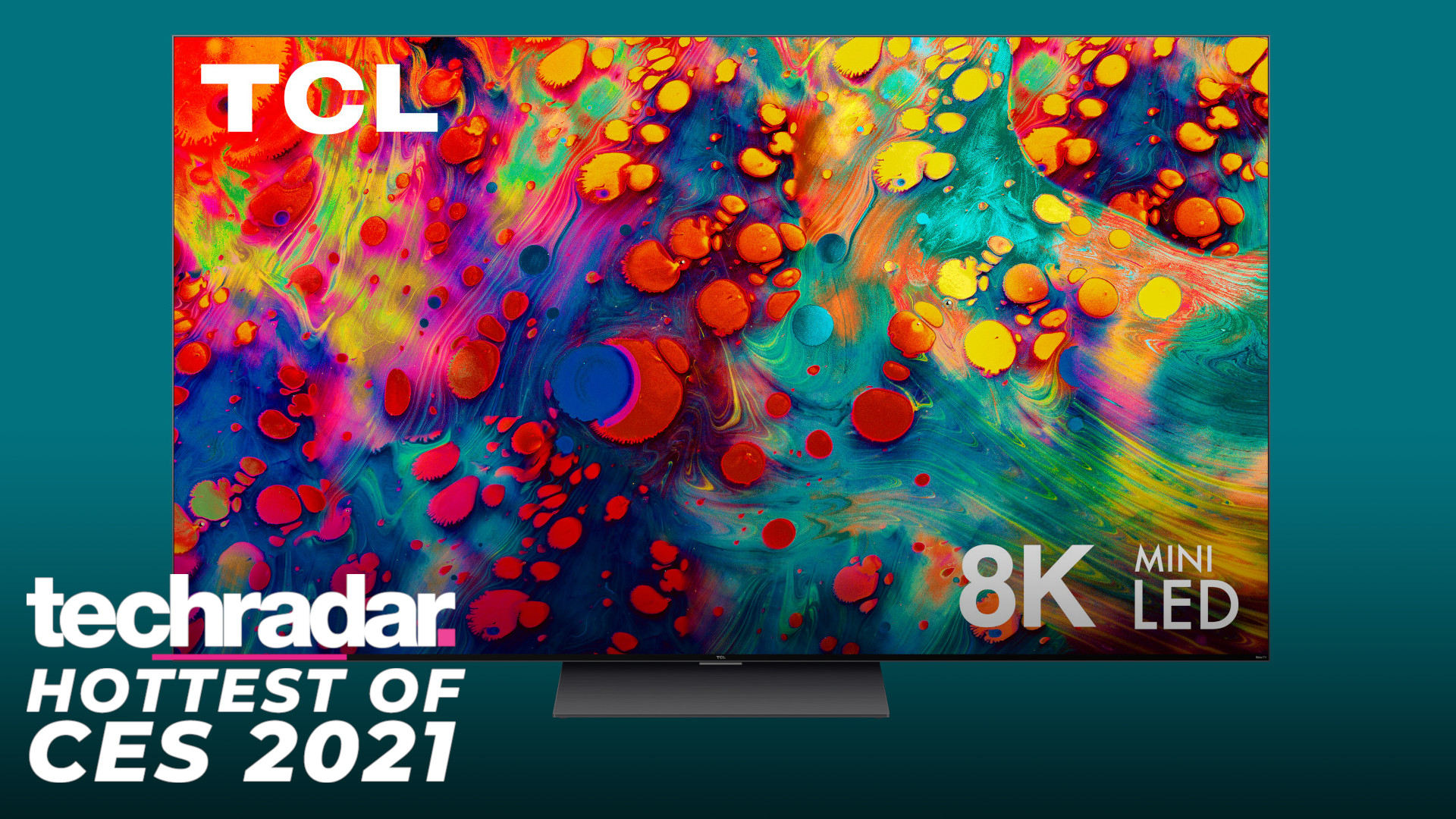
While it’s easy to get caught up in the whirlwind of flagship OLEDs from LG or cutting-edge QLEDs from Samsung, most of the flagship TVs shown at CES aren’t exactly affordable for the average joe. But that’s not the case with TCL - its flagship 6-Series TVs are always affordable and jam-packed with cutting-edge features like full array local dimming, quantum dot and MiniLED.
But, in 2021, you can add 8K resolution to the list, too.
At CES 2021, TCL announced that its affordable mid-range sets would be getting a bump up in resolution this year, bringing 8K resolution to the masses.
With that said, though TCL hasn’t announced the pricing of the new 2021 R648 models, if past years' models like the TCL 6-Series R635 are anything to go by, we’re about to see a sub-$1,000 8K TV sometime in the next 12 months.
Read more: The TCL 6-Series could feature the most affordable 8K TV ever made
TCL NXTPAPER
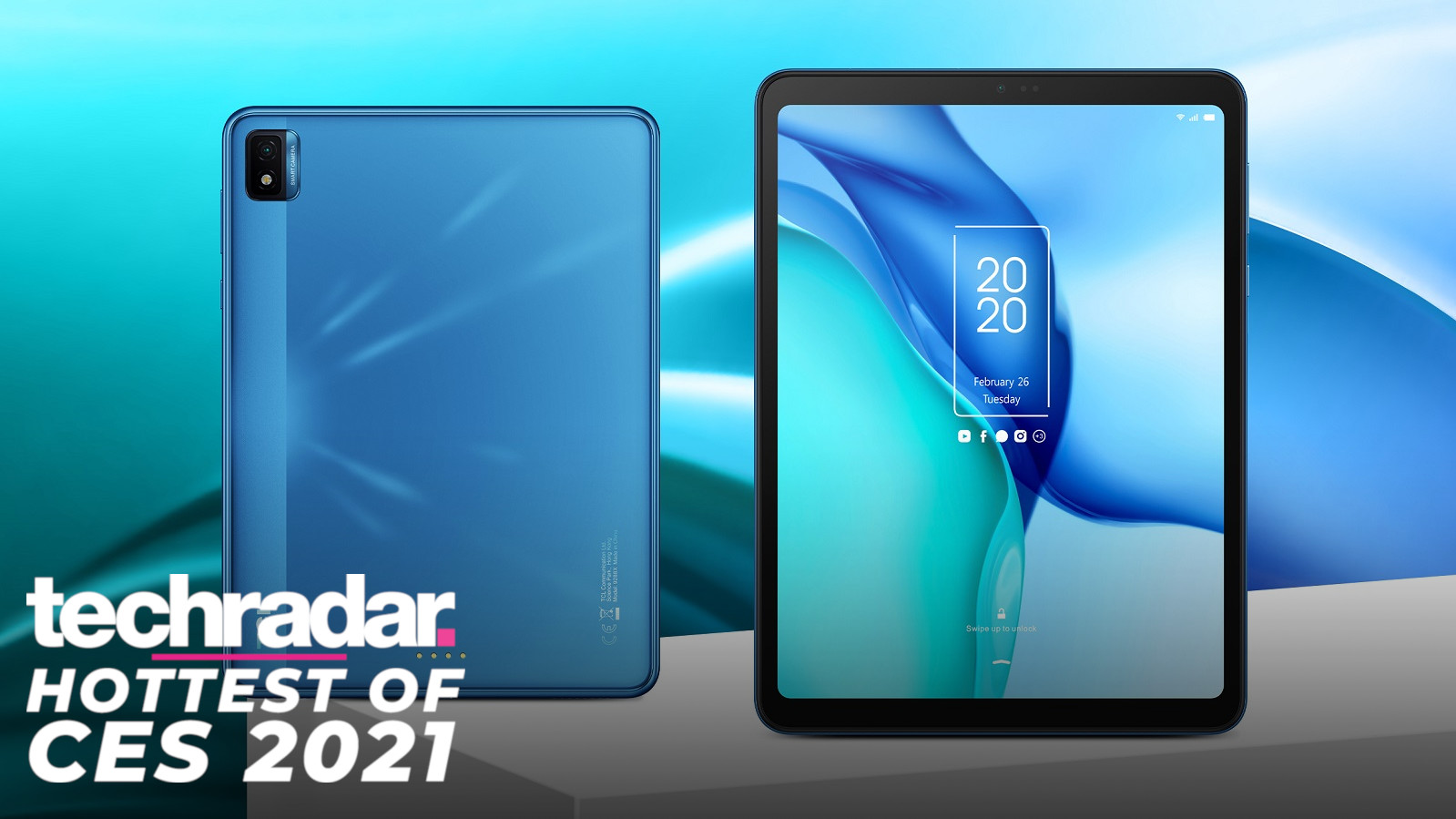
The TCL NXTPAPER is what would happen if you mixed traditional tablets and E Ink ereaders: its ‘paper-like’ 8-inch Full HD display emits no blue light, making it conceivably easier on the eyes.
Because it ‘reuses’ natural light, the NXTPAPER is 65% more battery efficient than a conventional tablet and yet, because of the colored screen, has better contrast than a traditional ereader - i.e. it’s looking like the best of both worlds.
In terms of specs, the TCL NXTPAPER packs a 5MP front-facing camera, 8MP rear camera, a 5,500mAh battery, and an octa-core processor allowing users to watch videos and other media.
None of that will make traditional tablets like the Apple iPad Pro or Microsoft Surface run for the hills, but considering that TCL plans on selling the NXTPAPER for just €349 in Europe, Africa, the Middle East, Latin America, and Asia, Microsoft and Apple are free to hold onto the high-end of the tablet market... for now.
Read more: TCL's color electronic ink tablet unveiled, could be a Kindle alternative
TCL Scrolling Screen Concept and Vertical Rollable Phone Concept
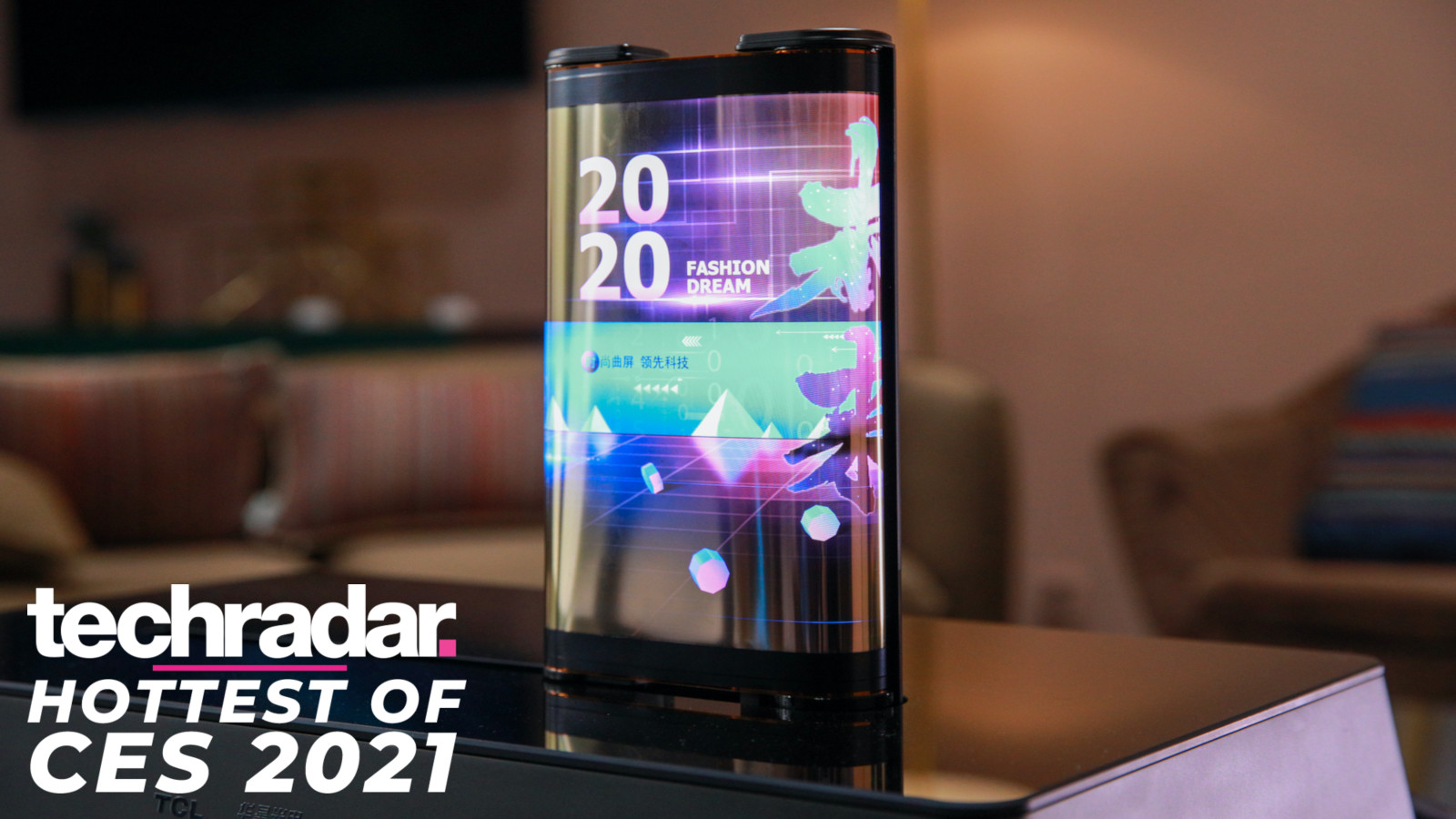
At CES 2021, TCL showed us that the future of phones are rollable. Not only did the company affirm that its rollable phone is still in development – but during its CES 2021 presentation, the brand showed off two new rollable concepts: one that rolls upward to make the phone taller and a wide scroll-like display that unfurled to a 17-inch display, which would reach laptop-size screen dimensions.
TCL showed off working tech demos of the vertical rollable and the scrolling display in tweets, demonstrating that, while they aren’t implemented in market-ready phones yet, they’re certainly on the way.
We’re putting these in the category of prototypes for now, but we’re hoping they make the transition into real products before CES 2022 comes around next year.
Read more: Phones at CES 2021: Rollable phones, Moto G series and more ahead of Samsung S21
- Check out all of TechRadar's CES 2021 coverage. We're remotely covering the online-only show to bring you all the breaking tech news and launches, plus a smattering of hands-on reviews.
The TechRadar hive mind. The Megazord. The Voltron. When our powers combine, we become 'TECHRADAR STAFF'. You'll usually see this author name when the entire team has collaborated on a project or an article, whether that's a run-down ranking of our favorite Marvel films, or a round-up of all the coolest things we've collectively seen at annual tech shows like CES and MWC. We are one.